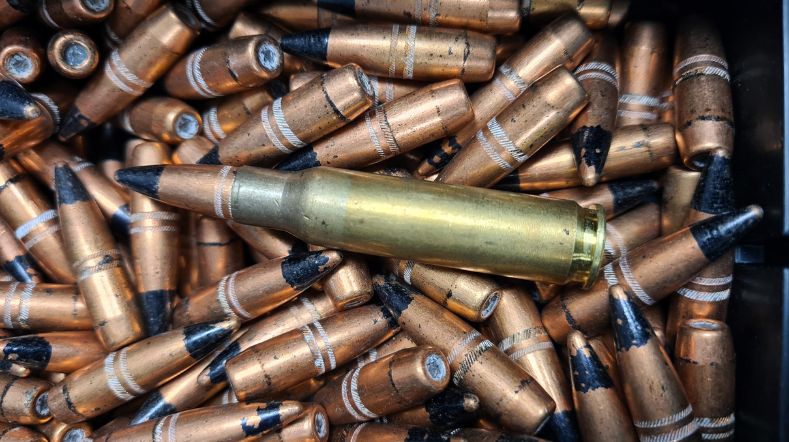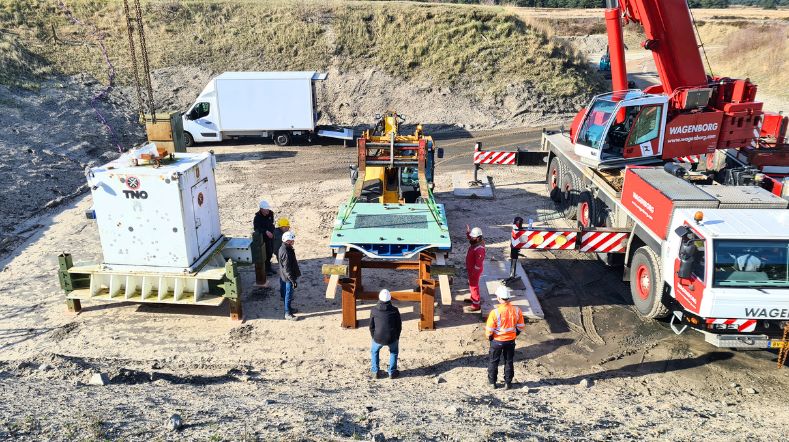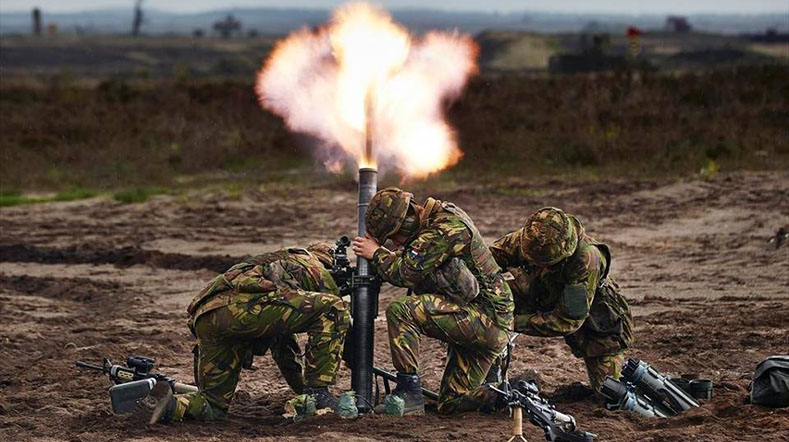Explosions, ballistics and protection
This page gives a brief overview of the expertise employed for the international (defence) industry as well as the Netherlands Ministry of Defense. Besides research, TNO offers services ranging from vehicle armour validation tests to personal armour qualification either with FEM or LS Dyna analysis or with experimental ballistics.
The ballistics research of this department is focused on terminal ballistics (behavior of a projectile when it hits its target). For terminal ballistics TNO's expertise lies in the development of enabling technologies for diagnostics. New developments for example are the ability to use an ultra high speed camera for x-ray imaging and a tool for indoor live firing of RPG type warheads. Evaluating munition or weapon effects for improved fire power and protection is another important part of this department's expertise. Among other things, TNO's knowledge of this topic is based on the following:
- Methods for analysing ammunition-target interaction by means of dynamic material characterization
- Munitions and target modeling by means of penetration relations, maintenance of target models, personnel vulnerability
- Weapon effects: ammunition effects and terminal ballistics of several new kinds of ammunition, lethality, method development vulnerability research.
Examples of TNO's involvement in these areas are e.g. with the development and evaluation of 35 mm projectiles for infantry fighting vehicles, the development and ammunition effects validation of of the VULCANO projectile for the LCF naval frigate and the development of a 25 mm frangible projectile for the Joint Strike Fighter.
In the field of vehicle protection TNO is active in design review, design Improvement / optimisation and evaluation / qualification according to NATO standards. To achieve this, the relevant threats and weak spots of a vehicle are modelled and analysed. TNO can consult on e.g. ballistic protection, reducing fluid flammability or the adding of active protection. With regard to protection of infrastructure please see Protection and survivability of infrastructure and an associated case SPIRIT.
Modeling tools such as FEM, LS Dyna for the purpose of failure analysis and material characterization are constantly used. They have been used in numerous cases e.g. to validate military vehicle designs, new infrastructure protection solutions or personal armour. A typical case: investigating the effect of steel fibers in high strength concrete for rocket impact. The objective was to investigate the protective capability of the target (to be used in infrastructure).
Failure analysis provided clear fail/pass evidence of different targets, consistent with live experiments. See the picture below for the FEM analysis results. These data were useful to the Netherlands ministry of Defence but can also be used in the future for further comparison with existing protection infrastructure (structures made of sand, gravel or steel).
Get inspired
TNO’s Unit Defence, Safety & Security strengthens ties with South Korea


How the use of passive radars and satellite signals can detect and identify aerial threats


Responsible for safety: the crucial role of the range operator in bulletproof protection


Is the race between protection and weight of Defence vehicles changing?


Prevent mild brain damage (mTBI) in the military? TNO is helping to build knowledge


